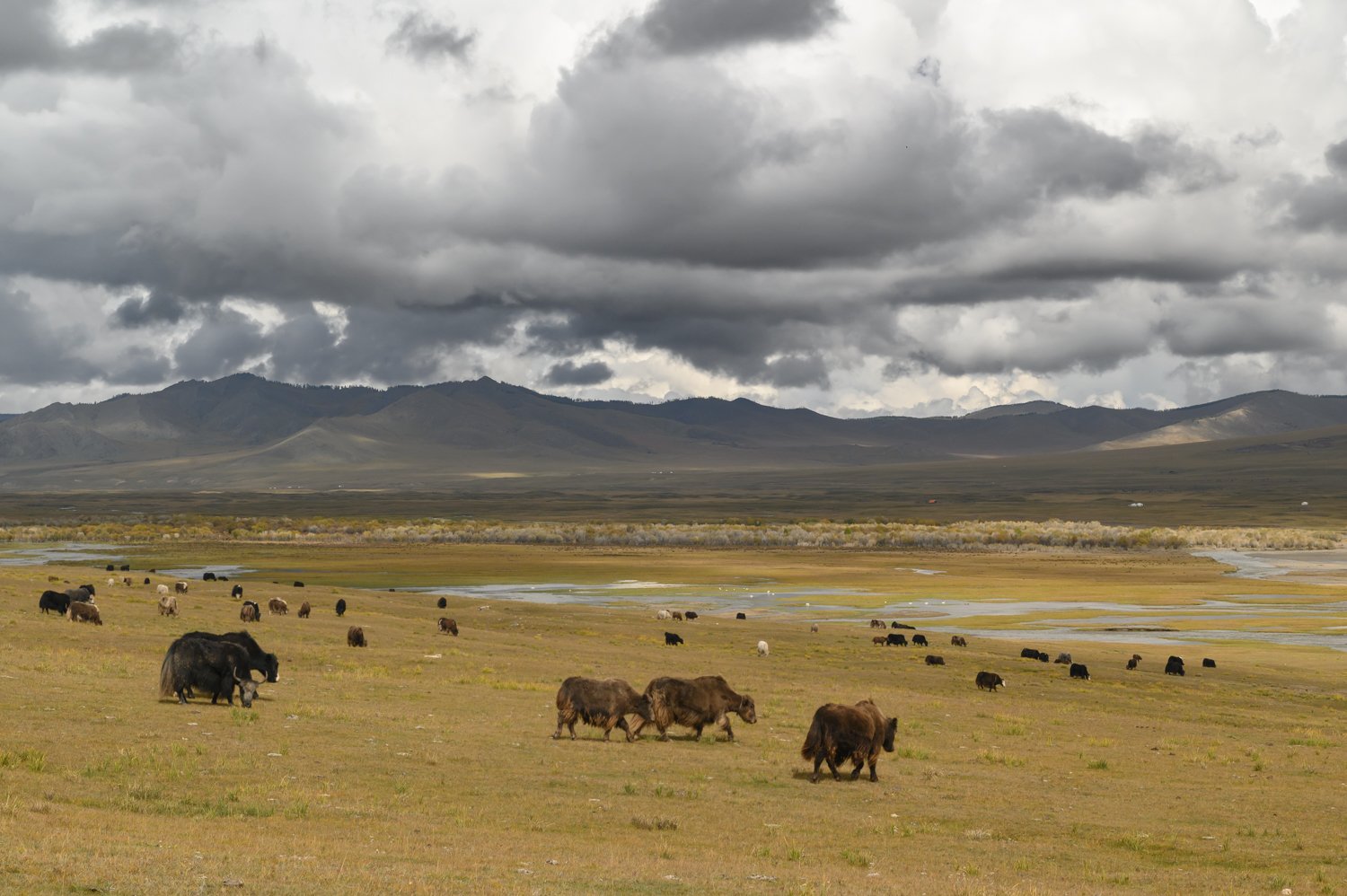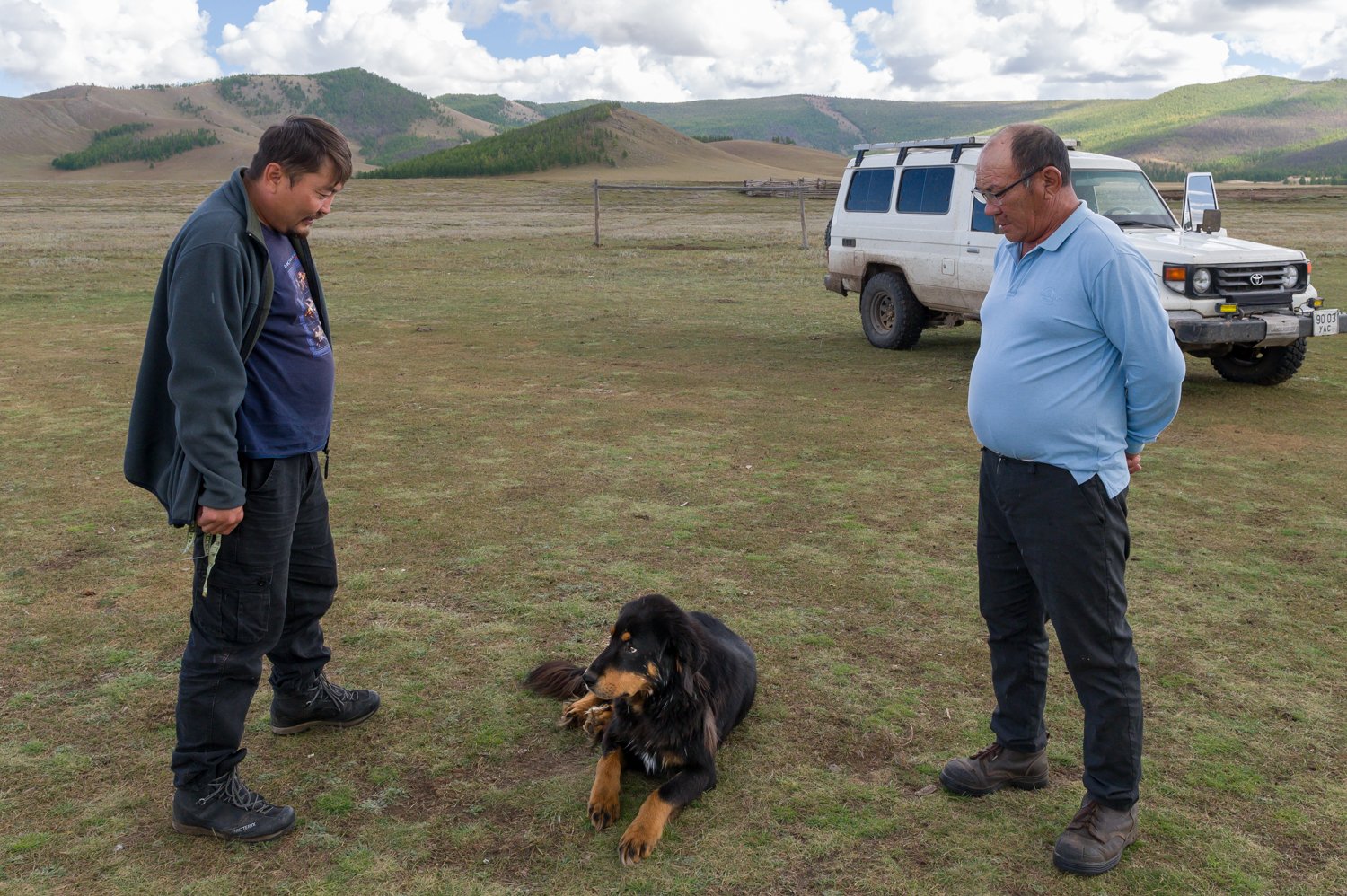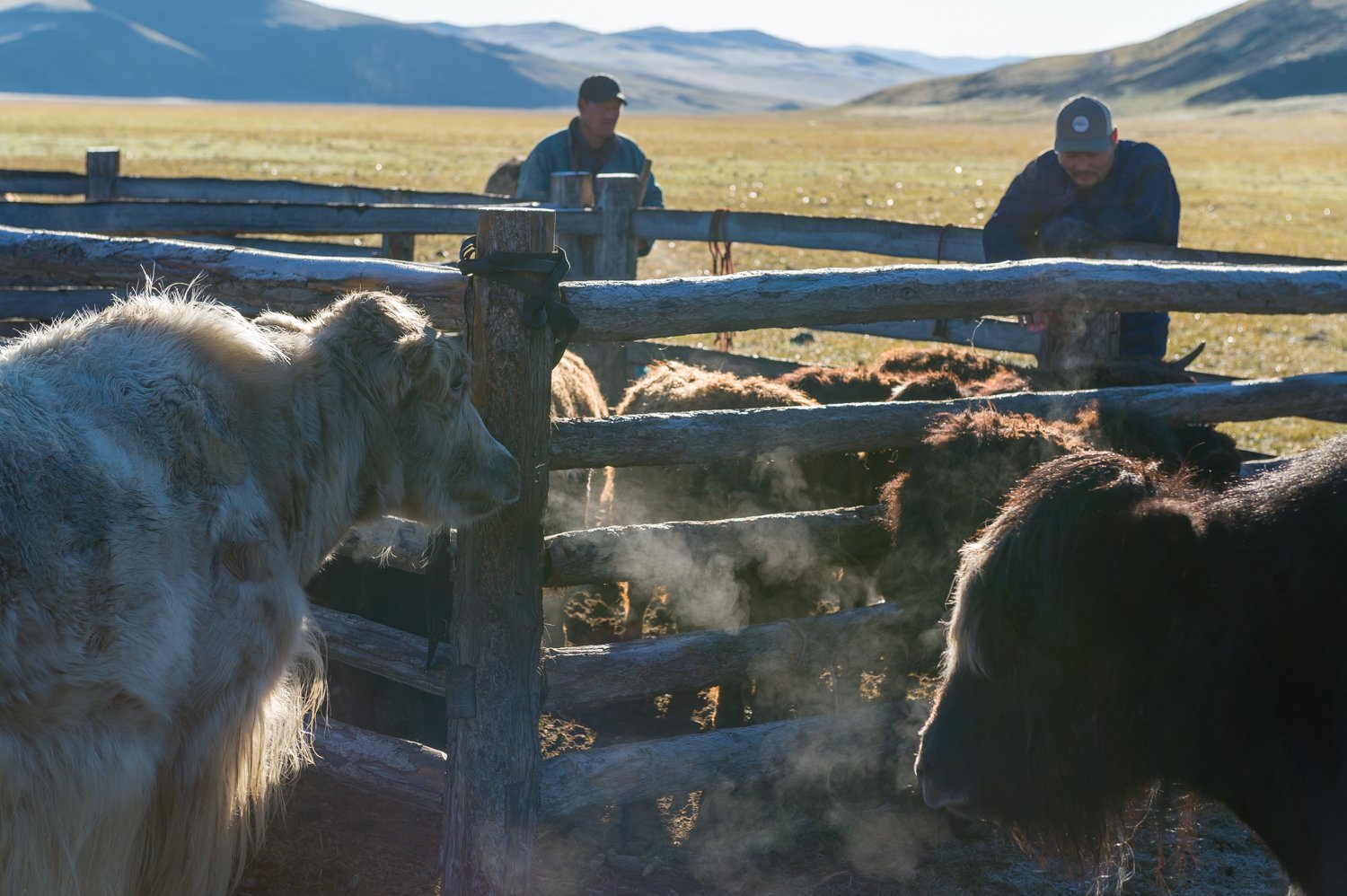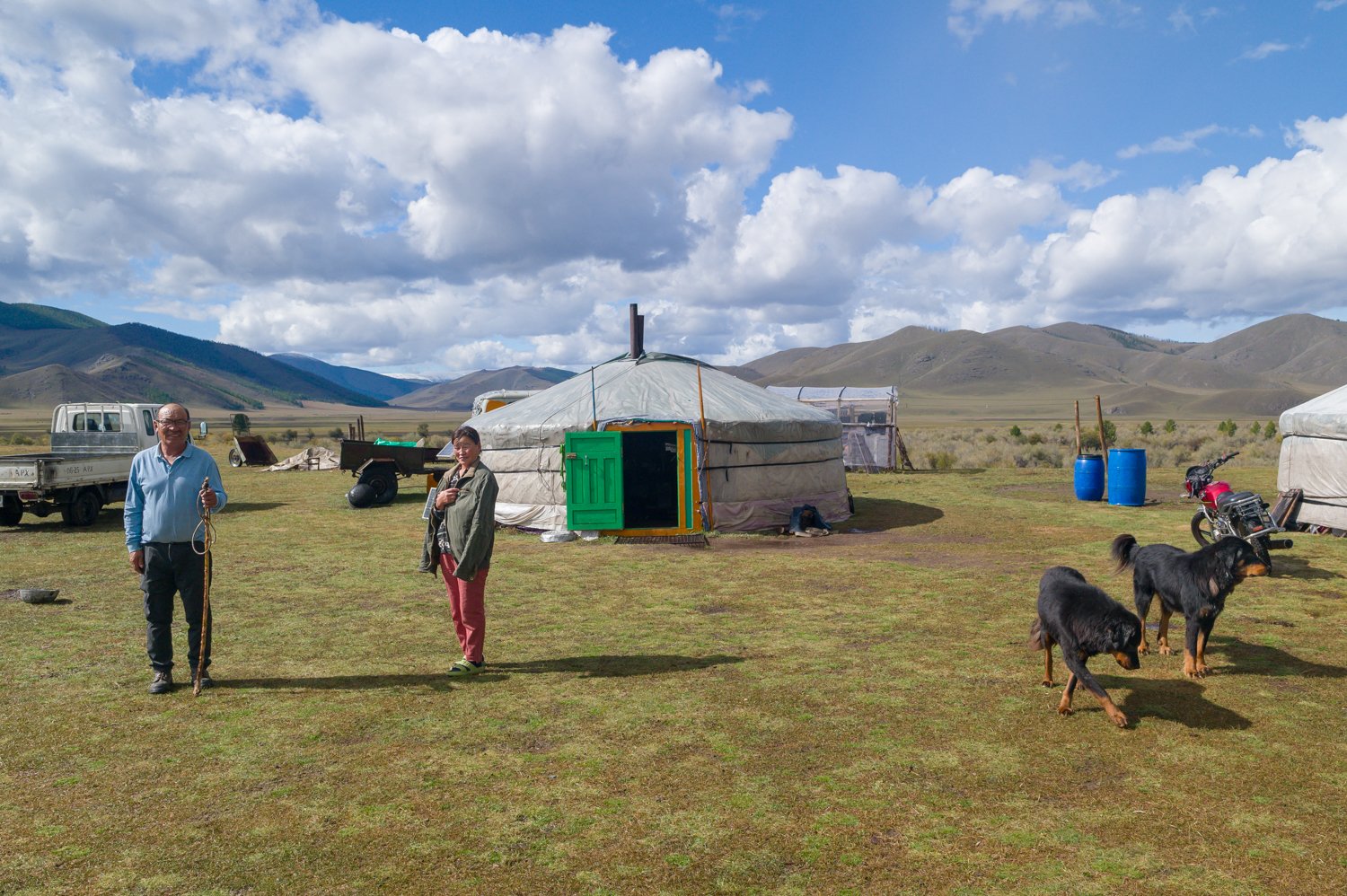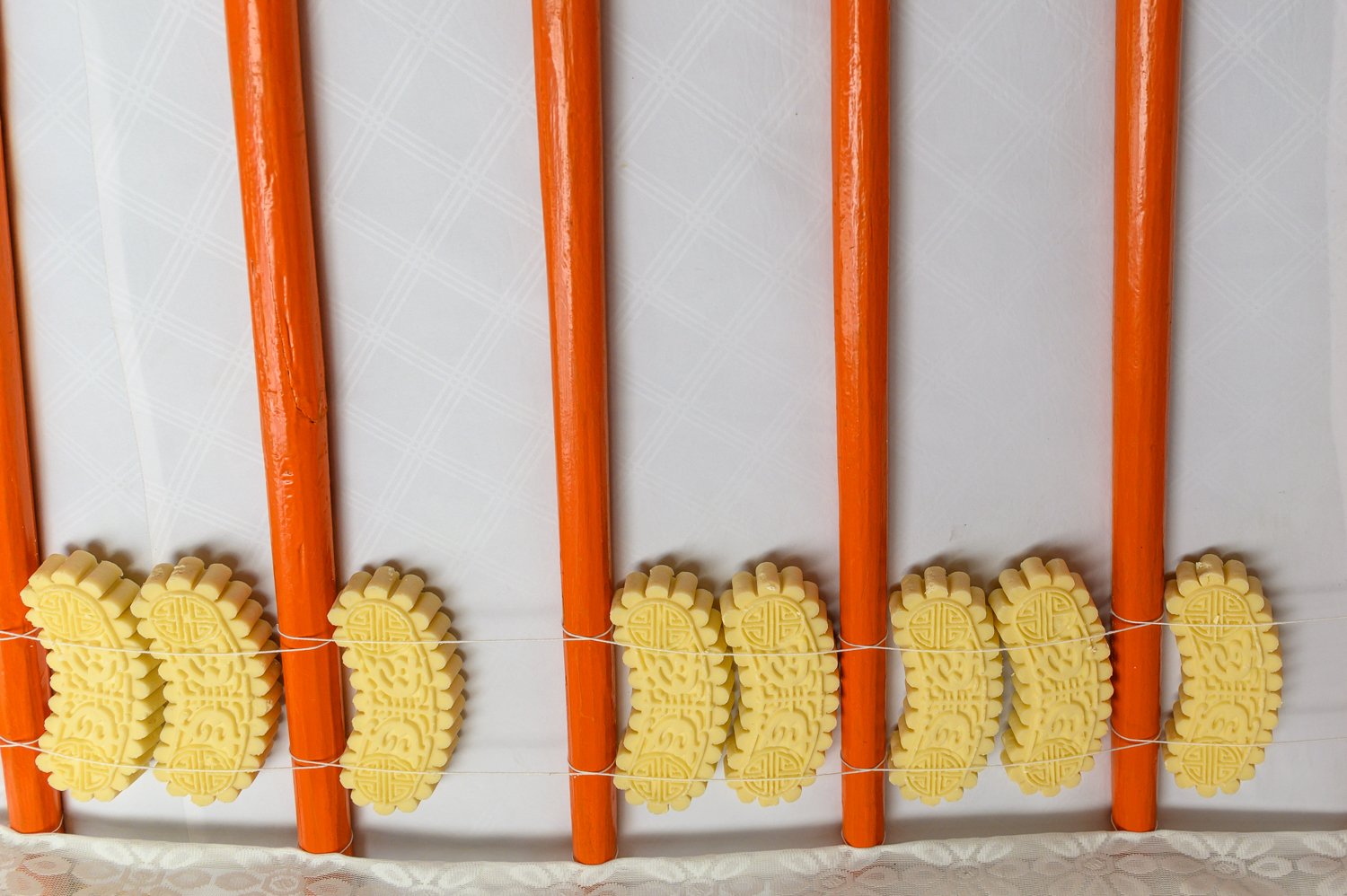Hot Springs and cold days in Mongolia
Three days into the Arkhangai region and it feels as if I have never been warm or clean. The landscape is impossibly stunning, but freezing rain pauses intermittently for snow. Or for brief moments to allow God rays to break through heavy bruised cloud, casting beams of golden light onto green mountain valleys cropped short by the wooly yaks that dot them.
I love camping, especially in Mongolia where anywhere you choose can be your campsite, but the frigid nights in my simple canvas tent, sleeping in my now damp sleeping bag as temperatures fluctuate around freezing isn’t ideal. Only when you live truly ‘outside’ do you realize how much of the western life is spent indoors. Normally I relish being outdoors all day, sitting in nature, rather than apart from it. But without the right gear for the early onset of winter, each day my mild chill builds progressively and I rebound a bit less. Despite the extraordinary beauty my mood is dipping. Soups, teas, and copious amounts of meat, essential to keep warmth up, help temporarily, but my lack of winter gear remains the deciding factor. I am experiencing first-hand the challenges that climate change is bringing to Mongolia, making the once predictable seasons and weather patterns, less predictable.
We have passed over the mountain ranges and into the valleys of the Arkhangai Province so we travel slightly faster on the rutted tracks. The northern slopes of the hills are wooded with pine trees, and herds of yaks dot the grassy slopes and valleys. Their awkward shagginess is impossibly cute, like a cartoon. More squat than a cow, their woolen coats hang down around them, and the sounds they make, almost a snorting oink is more what I’d expect of a pig than a bovine. When Baataraa first makes the sound of a yak, snorting out the window at them, I think he is joking.
When Baataraa’s biology, local history, and geology discourse touches upon hot springs, I pounce. In normal times I will detour or even plan a whole trip around hot springs. And he is chilled, if not as much as me. And neither of us have bathed in 10 days. With minimal discussion we detour up a nearby valley to the nearest hot spring. I am almost in tears of joy when we pull up to a group of rustic cabins for Mongolian tourists. Steam rises from a stream behind the cabins near an ovoo. Grabbing shampoo, towels, and our cleanest cloths from the truck we dash across the small mineral rich stream in the freezing rain to a handful of small wooden bath houses of dark wood, each for an individual bather.
Local community members, wearing heavy winter deels carrying their own towels, watch us with perplexed amusement as we each gleefully claim empty bath houses. I am giddy with excitement. Each holds a simple wooden bench and a wooden bathtub which is filled by blocking up the downstream end with the stopper. The tub will then fill up with water from the geothermal stream that it sits in. It’s an ingenious and luxurious community bathhouse in a province where there is no plumbing. Likely this community has had hot baths for hundreds of years.
The space isn’t brilliantly clean & the water is strongly sulphurous, but I haven’t washed in ten days and my teeth are chattering. As I sink into the hot water I almost cry in relief at the warm soapy water, but keep my wool hat on until I wash my hair as the saloon style door lets in the cold outside air. I am in no real danger, unlike in the winters when extreme cold and snow conditions (-40F is standard) can cause death rapidly and many Mongolians do die. The temperatures in Mongolia are becoming more and more erratic making a hard life even harder. Six weeks after I leave an unusually hard snowfall comes with a killing cold and in Baataraa’s hometown of a few thousand 6 people die.
Even knowing I was not in danger, it is amazing how much energy is used up in extreme weather, how fatigued the human body and mind becomes. The diet in Mongolia is meat heavy in part because as nomadic herders’, livestock is the most readily available food stock. But it also an efficient way to keep the body fueled with rich efficient calories when so much of the year is extremely cold. In my few weeks in Mongolia I ate more meat than I usually do in a year at home, but it was delicious fresh meat that lived and was slaughtered and prepared where I ate it. And I was beginning to suspect that if I stayed and ate the meat for a year I might do better with the cold.
I lie scrunched down in the hot water, steam rising the sides of the wooden tub, my feet blocking the gaps around the wooden stopper to keep the hot water in the tub. Finally, I regretfully get out. I pull on a clean shirt that I washed in a metal basin back in the Gobi Desert and the same pants I have worn every day. The blinding sunny heat of the desert seems eons ago, not 4 days ago. We leave the warm little cabins and head back to the truck.
(* apologies for the lack of hot spring specific photos, I was out of it.)
Mostly warm, and relaxed we decide that camping might be over for this trip and decide to find a ger to stay in. Here in the Arkhangai the grazing is richer, with regular rainfall and forests, but the herders face constant threats from packs of wolves in the forests they live among. Dear friends of Baataraa, welcome us both to their camp and I immediately am grateful for the bath but wish I was less scrubby. The wife is chic in her black jeans and turtleneck sweater, with braided pigtails and high black leather boots, she could be on the streets of Boston or Berlin. Our last few days in the countryside will be here staying in a warm ger shared with friends, no shared language on my part, but the warmth is clear, and over cups of steaming tea, soup and vodka I finally feel warm, inside and out.


